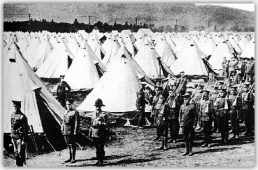
Basic training was an important part of every soldier’s preparation for going overseas. It provided them with skills in whichever field they were involved in and gave a great deal of fitness training to new recruits. In Canada the Canadian Officers Training Corps was in charge of preparing recruits for their mission abroad as well as to life in the military.





